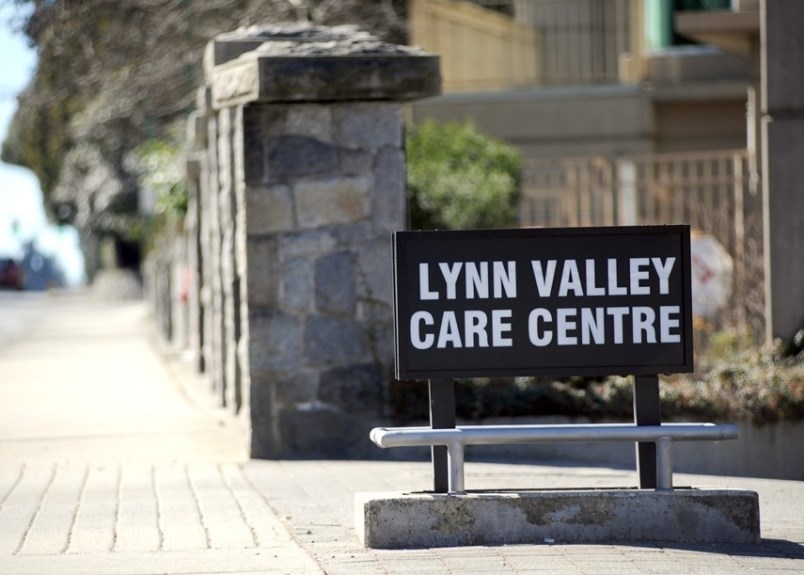A group of public health care advocates on the Sunshine Coast says the impact of COVID-19 on long-term care homes could have been lessened if Health Minister Adrian Dix had addressed concerns about privately owned and operated facilities earlier.
The Lynn Valley Care Centre in North Vancouver, a privately operated facility, was the first long-term care home in the province to declare an outbreak and one of its residents was the first COVID fatality in Canada.
As of April 27 there were active COVID-19 outbreaks at 20 long-term care facilities in the province. Earlier outbreaks at 12 other facilities have now been declared over.
Seven of the active outbreaks are in the Vancouver Coastal Health region and involve six privately owned facilities and one health authority owned and operated facility.
Of the 103 deaths from COVID in the province, 64 of them have been residents of long-term care and assisted living facilities.
As part of its response to outbreaks in long-term care facilities, the province moved to restrict staff from working at multiple facilities and negotiated a deal with public and private sector operators and health-care unions to ensure workers “receive an equitable wage and work-hours scheduling stability” – at an estimated cost of about $10 million per month.
But in a letter to Dix, copied to Coast Reporter, Ian McLatchie of the group Protect Public Health Care Sunshine Coast (PPHCSC) says the province should have taken those steps well before the pandemic.
“It’s long been evident that vast wage disparities between public and private facilities have created chronic staff shortages and jeopardized care. You’ve had three years to act but did so only when events forced your hand,” the letter says.
In February, seniors advocate Isobel Mackenzie released a report called “A Billion Reasons to Care,” which concluded there should be more transparency and “tighter financial oversight.”
Mackenzie found care homes in the not-for profit sector spent 59 per cent of revenues on direct care versus 49 per cent in the for-profit sector. She also reported that not-for-profit operators exceeded direct care hour targets by around 80,000 hours while for-profit care homes failed to deliver 207,000 funded direct care hours.
Mackenzie found that a big part of the difference was attributable to how much for-profit operators were paying workers, in particular care aides.
Mackenzie made a series of recommendations, but in its letter PPHCSC chides Dix for not acting on them.
“To your shame, you have not committed to implementing any of Mackenzie’s recommendations,” McLatchie wrote.
The letter goes on to call on Dix and the NDP government to make the recent orders around long-term care staffing permanent and switch to a public model, which was also the recommendation of the Canadian Centre for Policy Alternatives in a recent position paper that cited Mackenzie’s report.
“The coronavirus crisis shows that only well funded, publicly owned and operated care can protect us,” McLatchie’s letter says. “Enough of putting corporate interests over public good. Step up or step down.”
Responding to questions at an April 26 announcement of funding for family caregivers, Mackenzie said her report was only in the government’s hands for about three weeks before the health ministry had to start focusing on the emerging pandemic.
“Before the government really had time to think about a response, COVID hit, and then COVID hit Lynn Valley [Care Centre],” she said. “I think we need to see what’s going to happen over the ensuing months. There are some initiatives that have been put in place around care homes, most particularly around wage parity [and] looking at full-time jobs… So we may see in dealing with this pandemic some of the issues raised get addressed.”
Powell River-Sunshine Coast MLA Nicholas Simons, who was also copied on the Protect Public Health Care letter to Dix, said in an interview for Coast Reporter Radio that he thinks the government will address both the wage gaps in long-term care and public ownership.
“I think ultimately we need to recalibrate and think about where the public needs to be the owners and the operators of long-term care and assisted living so we can maintain standards that are appropriate for our community so we don’t see employees having to work at numerous locations for low pay and few benefits,” Simons said.
“I’m quite confident that we’re not going to shy away from taking steps that are needed.”
Jennifer Whiteside of the Hospital Employees Union, which represents around 50,000 workers at 300 facilities in B.C., also said recently that she expects the government to keep the new arrangements in place. “I would say there is no going back for our members.”
– With files from Glacier Media, North Shore News and Richmond News



